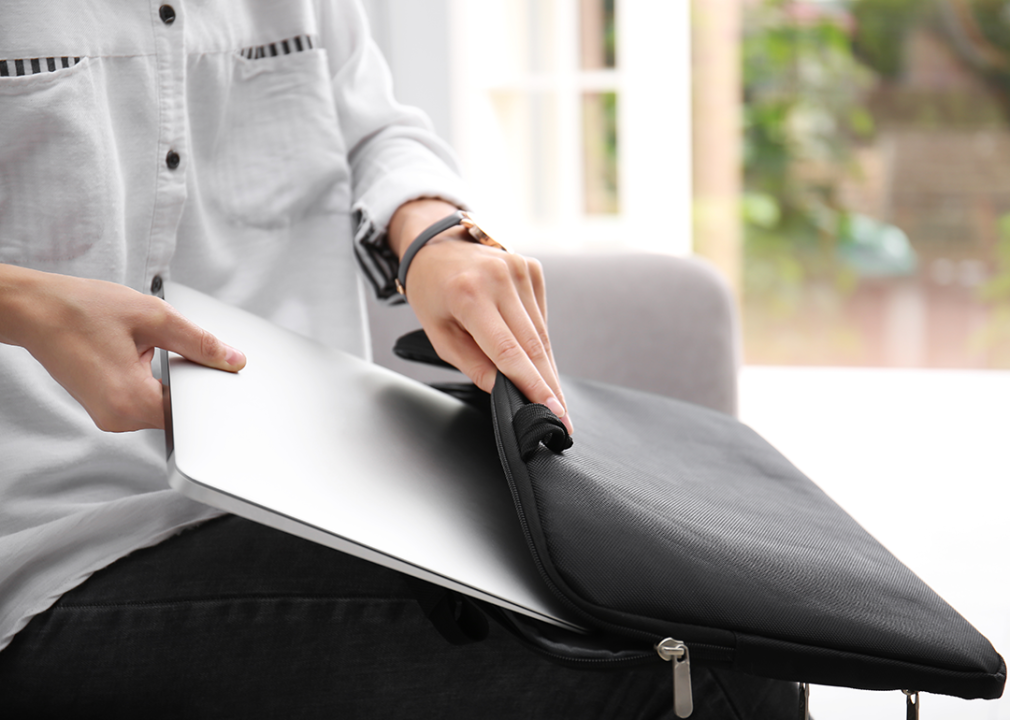As more women are diagnosed with ADHD, here's how their work environment can set them up for success

NDAB Creativity // Shutterstock
As more women are diagnosed with ADHD, here’s how their work environment can set them up for success
Woman with tablet in office.
New research affirms what we’ve known for more than 20 years now: Attention deficit hyperactivity disorder doesn’t just affect boys—it’s increasingly diagnosed across all age groups, especially among adults and women. Over just two years, between 2020-2022, the incidence of ADHD diagnoses in women ages 23 to 49 nearly doubled, contributing to an ongoing medication shortage in the United States.
ADHD symptoms can significantly impact productivity and stress levels for workers, whether they are remote, hybrid, or in-office. ADHD Advisor explored unique tips for managing ADHD in various workplace settings, highlighting common-sense accommodations that can improve the productivity of these workers.
The striking rise in ADHD diagnoses among adult women is linked to gender differences in the presentation of ADHD symptoms. Boys with ADHD typically present external symptoms like impulsivity, hyperactivity, and aggression, while girls tend to exhibit symptoms like distraction, disorganization, and forgetfulness. Outward, easily observable ADHD symptoms often cause more classroom disruptions and social issues, which leads to higher rates of intervention and diagnoses.
The result? Girls are significantly underrepresented in ADHD diagnoses. They are also more likely to be misdiagnosed with depression or anxiety and consequently don’t get to the root of the issue and receive the right ADHD diagnosis until they’re older.
Gender biases also influence how symptoms are perceived. Social dictates about women being more gregarious than men can mean hyperactive symptoms like giggling and excessive talking are overlooked. What’s more, girls who do demonstrate impulsive or aggressive behaviors pay a higher social price than boys for their “violations of feminine norms” like obedience and empathy. As a result, women may be more likely to internalize hyperactivity and verbalize overactivity, while men physicalize it.
From a young age, girls may learn to avoid the social repercussions of certain ADHD symptoms. As adults, they may find themselves unconsciously “masking” their symptoms in the workplace to fit in and hide their differences. Masking is common among people with ADHD and requires emotional and cognitive labor, psychotherapist Sarah Greenberg explained to ADDitude magazine. Masking, she said, “can feel like holding down multiple jobs at once.”
ADHD is not an impediment to a successful career. Many people thrive in various occupations and workplaces, and people with ADHD have also been shown to be creative problem-solvers who demonstrate curiosity and innovation. ADHD can also lead to a state of hyperfocus, known as time blindness. Some people with ADHD can get sucked into a task, losing their awareness of time and other high-priority tasks.
In recent years, a deeper understanding of executive functioning processes, which help people stay on task and on time, and greater awareness of neurological differences have led more workplaces to prioritize thoughtful and strategic accommodations for neurodivergent workers. Some companies, including IBM, Ford, and Microsoft, have even altered their HR processes to embrace neurodivergent talent.
That said, gender expectations and years of being mis- or underdiagnosed may still contribute to the shame and stigma sometimes associated with ADHD. Struggling to meet deadlines, finish projects, or stay organized clashes with the image of the on-the-ball, organized, multitasking female worker who is always ready to say yes and take one for the team. For women, who are already overlooked for promotions and must contend with the gender pay gap, managing ADHD at work can be particularly changing.
Because needs and accommodations vary from person to person, having collaborative conversations can help individuals with ADHD and their supervisors meet expectations.
Some accommodations are easy and obvious, while others may take time and effort. A candid, good-faith conversation allows employers to better understand the specific needs of ADHD employees and take the essential steps to help workers achieve their optimal performance.
Here are some strategies for all individuals with ADHD and their supervisors to collaborate on creating a workplace where everyone can thrive.
![]()

Prostock-studio // Shutterstock
Remote workplaces
Woman working at home office.
Remote work allows people with ADHD to lean into their strengths of hyperfocus, have more privacy for sensitive conversations, and control their environment.
That said, people with ADHD or another disability are twice as likely to feel anxiety about their career growth when working remotely than their other colleagues. Online communication platforms can feel draining and occasionally more time-consuming, with more time spent reading emails and messages and crafting clear responses. And 1 in 5 women still telework—or do paid work from home—at higher rates than men.
To manage ADHD as a remote worker, avoid “set-shifting,” or switching between situations, by creating rituals to distinguish work, breaks, and home life. For instance, walking the dog can signal the end of the workday, or sensory cues like turning off your desk lamp when you’re done working or lighting a candle when you’ve punched the clock.
Remote workers can take control of their energy and time by setting messages indicating when they’re in deep-focus mode and not immediately available. If back-to-back Zoom meetings sap your energy, brainstorm what meetings could be skipped, delegated, or scheduled more strategically. And though it’s wise to consult a doctor before altering your habits, adding healthy routines like movement breaks throughout the day or prepping lunches can support focus and cognition.

Drazen Zigic // Shutterstock
In the office
Woman with headphones in office.
Working in an office may provide much-needed delineation between work and home for people with ADHD. Plus, on-site work has benefits that include streamlining communication, facilitating prioritization, and keeping the work dynamic. However, there’s less control over visual and auditory distractions in a shared space.
Start by controlling and monitoring what you can: Keep your desk clear of clutter, use headphones that signify “do not disturb,” and keep your calendar as focused as possible with time blocking. Some employers might even provide accommodations like noise-canceling headphones or a desk in a soundproof area—don’t be shy about asking for what you need.

New Africa // Shutterstock
Hybrid workplaces
Woman packing laptop into case.
Hybrid work settings are often billed as the best of both worlds, but that’s not the case for many people with ADHD. A mix of remote and on-site days can mean more choices and emails, not having a designated workspace, and a varied daily schedule—all factors that can make people with ADHD feel unmoored.
In a personal essay for Fast Company, entrepreneur Tasha Booth explained that people with ADHD in hybrid work settings should embrace their workflow and stop feeling ashamed if it’s different from others. She also suggests informing colleagues about the need for structure or lack thereof, whether requesting deadlines to help with prioritization or asking for asynchronous work to reduce the stress of always being “on” when others are.
Another way hybrid workers can manage the transition is to double up on items like a mouse or keyboard that are easy to forget. For essential items like your keys or work notebook, make a “drop off” station where you always leave these items so you can grab them without thinking when you’re on the go.
Across workplace settings, structure and limiting distractions are vital for people with ADHD. Adopting a planning system to stay focused, keeping lists of creative ideas or important tasks, and incorporating physical movement into everyday routines can manage symptoms or workplace challenges.
Cultivating a positive mindset to see ADHD as a strength can also help, regardless of where you work. Thanks to David Neeleman, CEO of JetBlue, and his continual misplaced paper tickets, we now benefit from the plane e-tickets he created. Innovation is out there—with the right accommodations.
Additional writing by Alizah Salario. Story editing by Shannon Luders-Manuel. Copy editing by Paris Close.
This story originally appeared on ADHD Advisor and was produced and
distributed in partnership with Stacker Studio.
